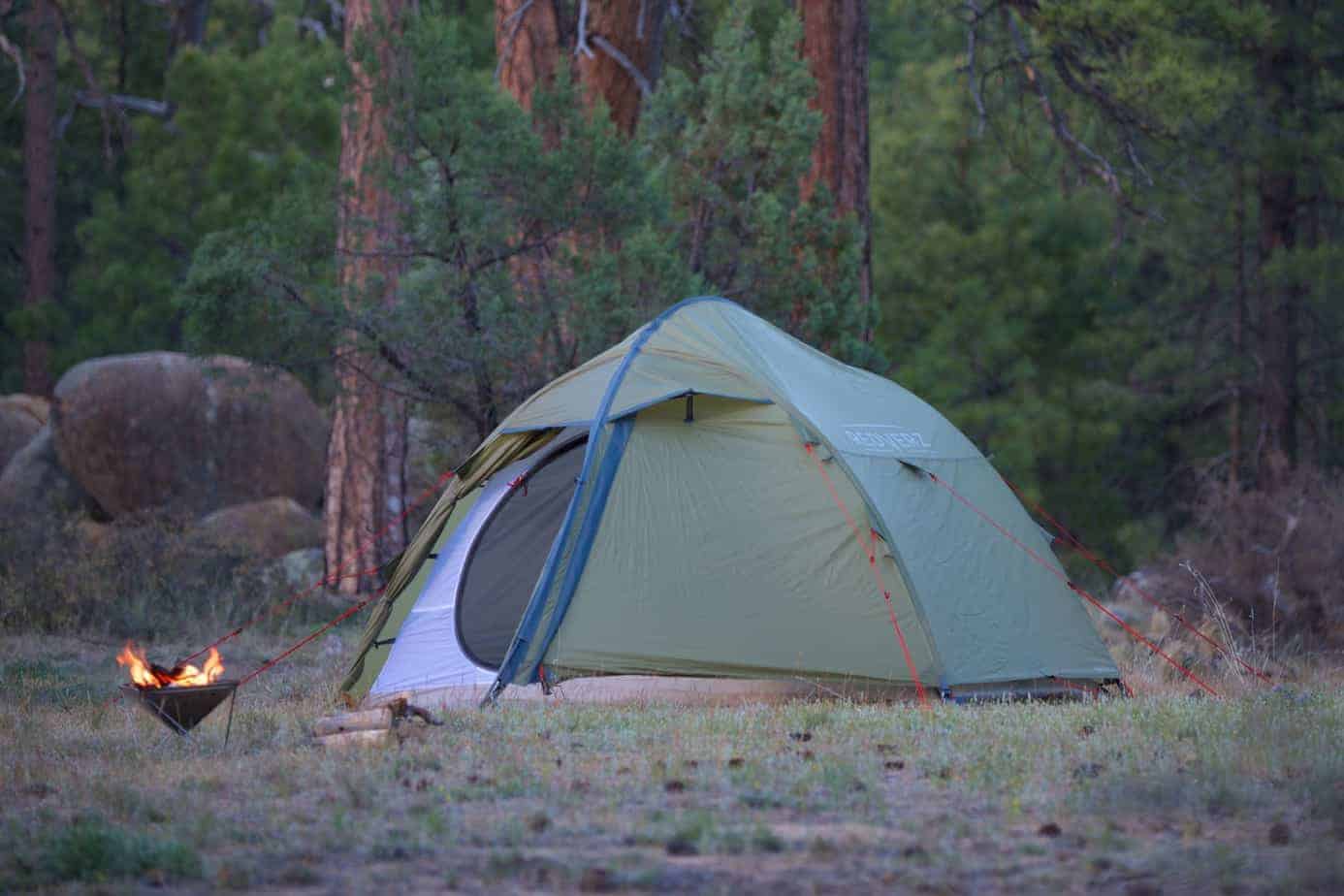When Redverz entered the market a few years ago they made a big splash with their Atacama tent, built to house a pair of sleepy travelers as well as a full-sized motorcycle. I can see the advantages of such a structure, but I’m oft inclined to distance myself from my machine after a long day in that saddle. For that reason alone, I was excited to see them introduce a more traditional tent in the Hawk II.
The Hawk II fits within a category of shelters with few peers. By the numbers it’s suitable for all four seasons, uses three aluminum poles, fits two people, and is made well enough to survive one full lap around the globe. It’s a fortress in foul weather, a cozy retreat on warm nights, and sturdy enough to be home away from home for months on end.
The strength of the Hawk II comes from a proven architecture which places the DAC Featherlite poles in the outer rainfly layer. Beneath the fly, the tent body hangs from multiple attachment points. The optional ground sheet further encapsulates the tent body helping to sequester it from exposure to weather. When pitching or striking the tent in rain or snow, keeping the tent body always enclosed is a key benefit of the exoskeletal design.
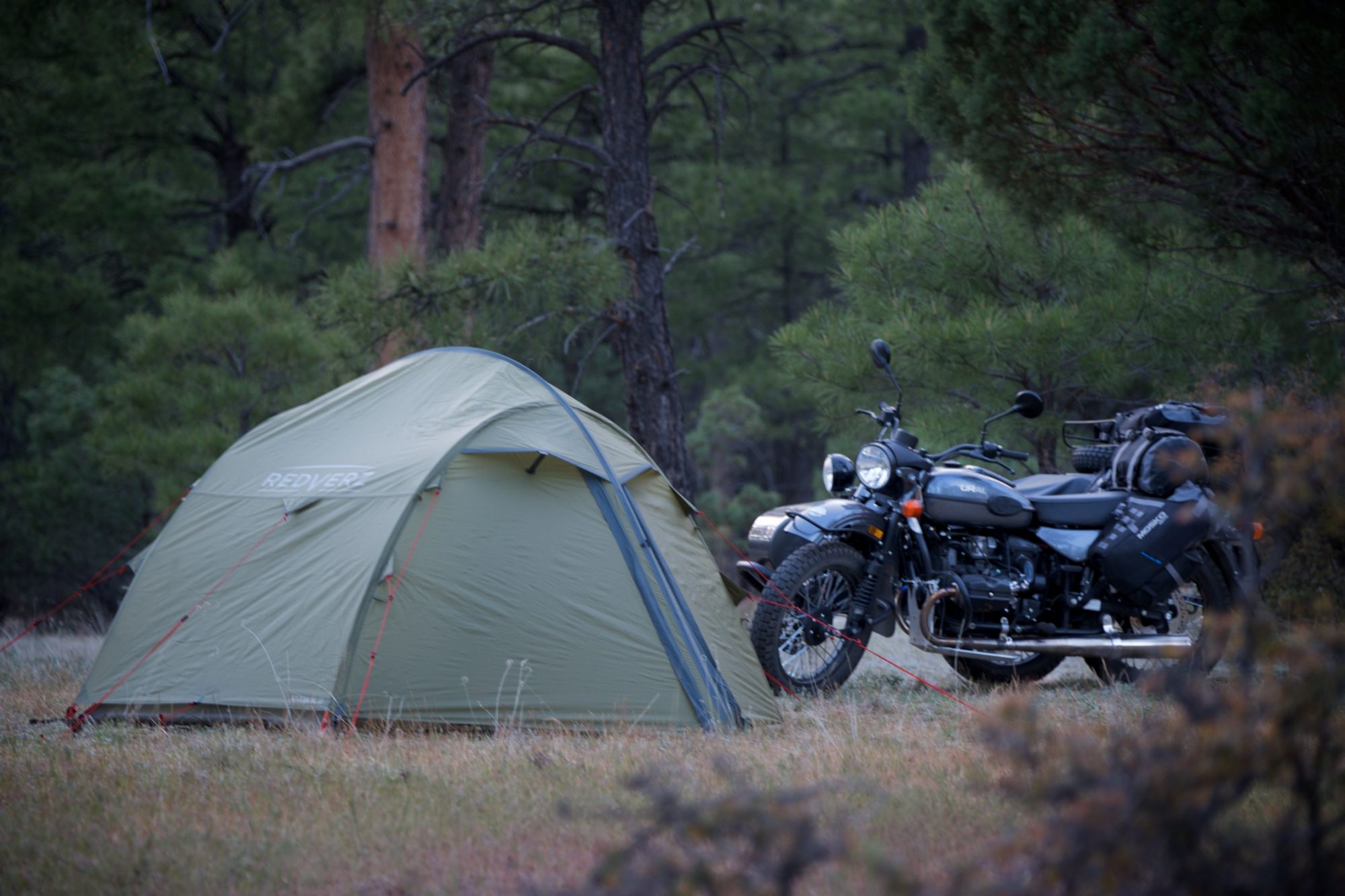
With a symmetrical floor plan, setup is made easy with no guessing which is the front or back. The three pole sleeves are color coded to match the corresponding pole segments and can be inserted from just one side. This eliminates the need to orbit the tent repeatedly during the pitch. I also appreciate how the captive ends of the pole sleeves are adjustable. This permits the poles to be secured without a struggle, and tightened accordingly when in place. Start to finish the entire setup, including placement of all 12 stakes for the tent and guylines, takes less than 10 minutes. That’s not as rapid as some tents, but given the level of protection it affords, I’ll gladly take the extra setup time.
What I like most about the Hawk II are the dual vestibules, each featuring full-sized double doors. This allows both sides of the tent to be exposed for maximum air pass-through. It also allows one door to be opened, and one left closed, to offset wind direction. For my solo escapes, I often use one vestibule for gear stowage, the other as my entry and exit point. When my wife joins me, we each have our own vestibule with ample room for gear without blocking our respective exits.

When weather blows, forcing the vestibule doors closed, four shrouded vents near the peak of the rainfly help circulate air to reduce condensation. The only drawback I noticed when sealed up tight in the tent in warmer temperatures is the lack of ventilation lower in the tent structure. On the upshot, the full coverage rainfly offers formidable top to bottom weather defense, even in the worst driving rains.

One of the finer refinements are tiny pockets at the anchor points which can be used to store the lines when they’re not in use. That helps declutter the tent during setup and break down.
It’s obvious a great deal of design attention went into the rainfly layer, but the inner tent is equally well engineered. The two doors are not only massive, they’re made of a combination of solid ripstop nylon and fine mesh sewn into vertical sidewalls to maximize interior space. The rounded roofline creates an open space with gratuitous headroom and no perceptible feeling the walls are closing in. That sense of spaciousness is augmented with a brightly colored inner fabric. I loathe dark tent walls as they make for gloomy places to dwell when sitting out a storm for hours on end. Another perk of the design is a minimum of seams in the tent canopy. It sounds silly, but that simplicity keeps the interior from appearing busy, or cluttered. That suits my fastidious nature quite well.

There is generous real estate inside the Hawk II for two sleepers. A 72-inch pad fits with lots of room to spare at the head and foot.
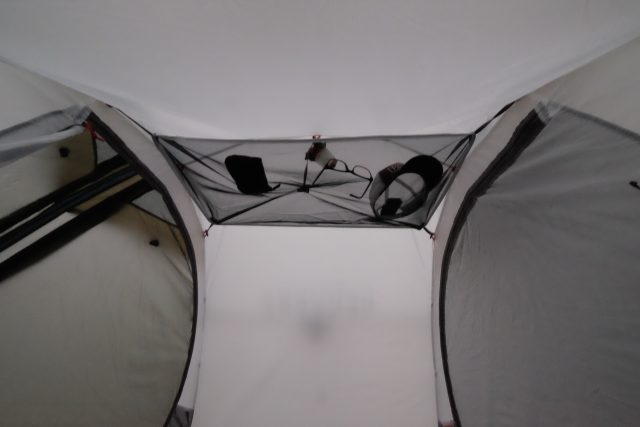

One of my favorite attributes of the interior is the enormous gear loft and mesh pockets at all four corners. I apparently like to surround myself with lots of stuff, so I love storage options. 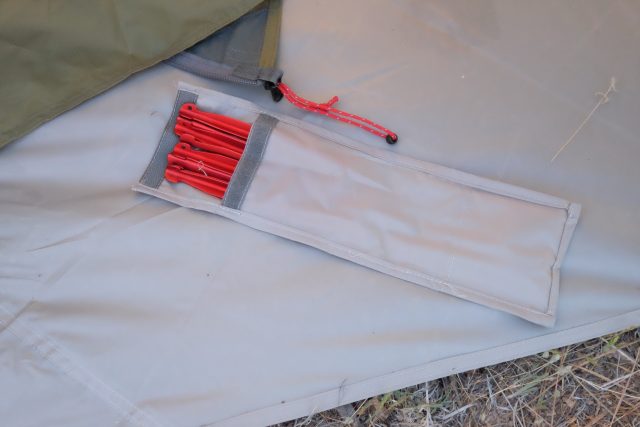
Another nice touch, one rarely seen, is a full groundsheet which extends into the vestibule areas. I appreciate the ability to step out of my boots onto a nylon carpet before diving into my cozy abode. It’s also a nice place to store wet clothing, stinky socks, or my helmet, without having everything plopped in the dirt. It’s details like those which make me realize how much time Redverz founder Kevin Muggleton spent living in the Hawk II.
Rounding out the finishing touches, the Hawk II is packaged with a dozen high quality aluminum tent pegs, a pole splint, and fabric swatches for repairs. The tent guy lines are made of heavy cord and the pegs and poles have their own dedicated storage pouches. Everything fits in a properly sized stuff sack with compression straps. If I had one very minor quibble, it is with the fabric used for the stuff sack. I wish it was more robust and made of the same fabric as the 70-denier floor. Stuff sacks seem to suffer an untimely demise, particularly during long motorcycle voyages.
The wrap up
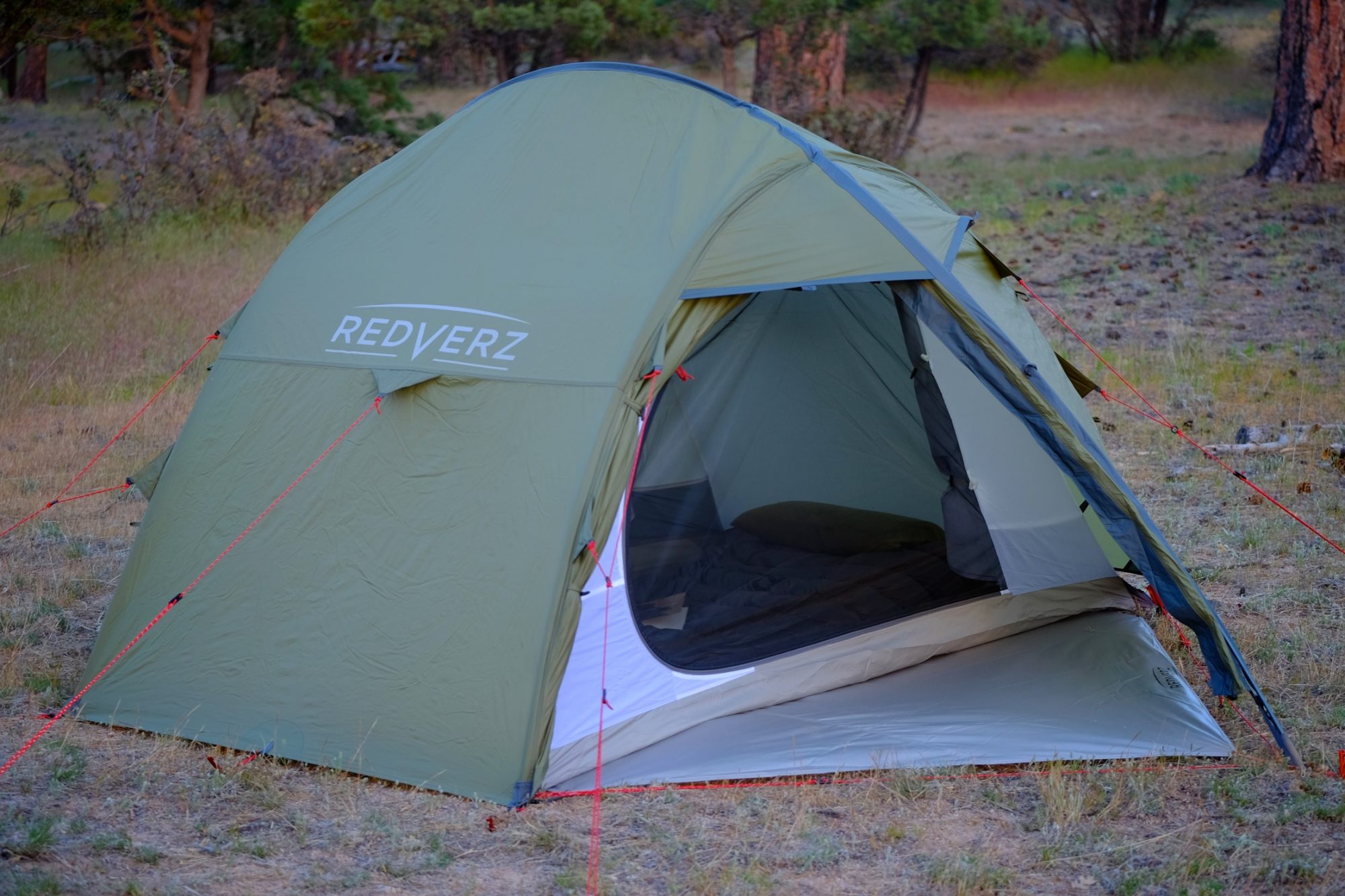
Over the span of 20 years I’ve evaluated well over a hundred tents. I’m a tough critic and prone to scrutinize the most inane details. Those details often make or break a tent and Kevin, the man behind the brand, is clearly aware of the importance of the little things. I was impressed with the heavy duty 70-denier floor fabric, the quality of the D33 1.5-millimeter mesh, DAC Featherlite poles, and other premium materials. The 48-inch peak height is tall enough for even big guys to sit up and the sub-7- pound total weight is impressive considering the size, features, and robust construction.
If I was headed off on a year-long overland journey to the far flung corners of the globe, I’d have no hesitation grabbing the Hawk II and calling it home. I’d feel confident it would serve me as well in the Sahara as it would in Siberia.


